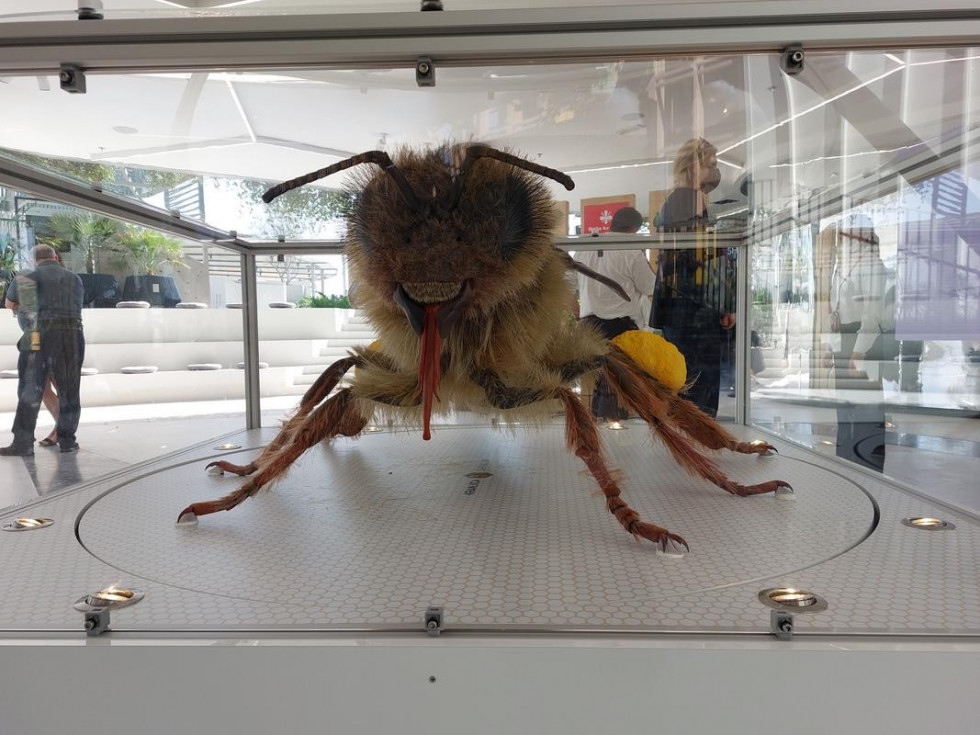Gigantic Carniolan honey bee enthuses Dubai Expo visitors
"Slovenia is a country with a rich bee-keeping tradition. After all, it was Slovenia that launched the initiative to declare 20 May World Bee Day. We want to show all this and more in the Slovenian pavilion at the Dubai Expo. That is why we have brought the model of the Carniolian honey bee to Dubai as part of the presentation of the Osrednjeslovenska region," said Matic Volk, Commissioner General of the Republic of Slovenia for Expo Dubai.
"It is proving one of the most popular attractions at the Expo and a prototype raising eyebrows among visitors and other participants of the exhibition. The 3D model of the bee was made by the company Intri for the Slovenian Beekeepers’ Association. Honey and bees are among the main highlights and topics of Slovenia's presentation at the World Expo," stressed Mr Volk.
The model of the Carniolian honey bee (Apis mellifera carnica), parts of which are moveable, is 170 cm long and was created in August last year as a contribution of the Slovenian Beekeepers’ Association for the Slovenian Presidency of the Council of the EU. As the association pointed out, the giant bee was made for promotional and educational purposes. The model is placed on a rotating platform built into a replica of a beehive.
The creation of the model, with more than 90% morphological similarity to a real worker bee, was complex both artistically and technologically and was made possible using state-of-the-art technology. The basis for the model was a real Carniolian honey bee, which was scanned using a Micro-CT scanner at one micron resolution. The digital model of the bee was then used as the template for the physical model, which was made using 3D printing, the Slovenian Beekeepers’ Association explained.


